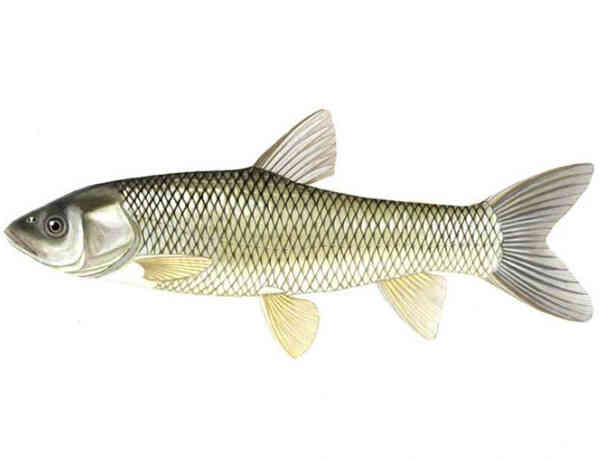
Alias Ctenopharyngodon,Grass carp, grass carp, oily grass carp, grass carp, white grass carp, grass carp, grass carp, thick fish, sea grass carp, mixed fish, black herring, etc.
Family Cypriniformes Cyprinidae G.carp
It is named because it eats grass (Li Shizhen of Ming Dynasty). In Erya, it is also called carp, which is the same as 鰀 (Guangyun); it is also called 鯶. Guo Pu of Jin Dynasty noted that "today's 鯶 is similar to trout but larger". Li Shizhen said that "its nature is relaxed, so it is called carp and 鰀. It is commonly known as grass carp". In Northeast China, it is called grass root fish; in Beijing, it is called grass bag fish; in Hebei Province, because of its wide and thick head, it is called thick fish. Because of its lighter color, it is also called white carp.

Grass carp is a typical herbivorous fish that inhabits rivers, lakes and ponds in plain areas. It generally prefers to live in the middle and lower layers of water and nearshore areas with abundant aquatic plants. It is lively, swims quickly, and often forages in groups. Grass carp feeds on larvae, algae, etc. during its juvenile stage. Grass carp also eats some meat, such as earthworms and dragonflies. It hibernates in deep waters of mainstream streams or lakes. Parents have the habit of upstream migration during the reproductive season.
Grass carp is an important freshwater farmed fish in China. Together with silver carp, bighead carp and black carp, it constitutes China's "four major carps". Because grass carp has simple food, a wide range of feed sources, and tender meat, it is an excellent farmed fish and one of China's four traditional freshwater farmed fish with high economic value.
Grass carp is rich in unsaturated fatty acids, which is beneficial to blood circulation. Regular consumption can protect cardiovascular and cerebrovascular vessels and is a good food for cardiovascular patients. Grass carp is rich in selenium. Regular consumption has anti-aging and beauty effects, and also has a certain preventive and therapeutic effect on tumors. Grass carp is rich in nutrients, rich in various trace elements and vitamins. For people with weak bodies and poor appetite, it is an appetizer, a tonic, and a good tonic for strengthening the body.